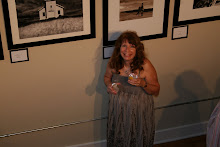I believe that it is important to learn about the past to discover more about our descendants. So I am reading through books and articles to understand the people and their environment. I will also be naming the individuals that meet on their quest. I will be beginning with The History of The Dividing Line by William Byrd II. William Byrd II was a member of the prominent Byrd family in Virginia. He was the founder of Richmond and his home was called Westover. If you have never been to that area, it is well worth the visit. William Byrd II was educated in England and was an author of History of the Dividing Line, A Journey To The Land of Eden and A Progress to the Mines. There is also a book that I think would be well worth reading the Secret Diaries of William Byrd of Westover. For more information about William Byrd you may want to go the Colonial Williamsburg Foundation website and there are many more at your fingertips.
The History of the Dividing Line is about an expedition in 1728 which was comprised of Mr Byrd, commissioners, surveyors, ministers, Indian traders and expert woodsmen. They had been given the task of surveying the boundary line between North Carolina and Virginia. There was some controversy about a previous survey that was completed so Lt. Governor Spottswood of Virginia and Governor Eden of North Carolina commissioned a new team to survey the area. The group of commissioners, surveyors, chaplain and seventeen frontiersman started on their journey on February 27, 1728 near Surry County, Virginia. Two of the Surveyors from Virginia were Mr. Mayo and Mr. Irvin. Mr. Irvin was a mathematician from William and Mary. Two other commissioners were Mr. Moseley and Mr. Swan who was also a surveyor.
There first stop was Mr. Allen's home and they proceeded through Surrey County to the Widow Allen's home. Mr. Bryd mentions that Widow Allen is a good housewife. They do not tarry along and they make their way to the South Branch of the Nansemond River at Mr. Godwin's abode where they were treated hospitably, but it was primitive. He ferried them across the river and they crossed the dismal swamp. There they found trees covered with moss,berried evergreens, myrtle trees covered with candleberries and desolation.After crossing the north end of the Dismal Swamp they arrived at Mr. Crafords which was located on the south branch of the Elizabeth River over against Norfolk. There they met up with two more commissioners. The town was close to the sea which made it easy for vessels to come into port. It was a rowdy place with debauchery and drinking. They attempted to recruit more men for the journey, but no one wanted to travel over rough bogs, marshes and swamps not fit for humans to live.
They finally found someone to draw them a rough sketch of the area so they could begin their journey to Curituck Inlet to begin surveying. Eventually they left and on their way to the inlet they met a Parson of the Parish near Powder Point called Mr, Marston.
Arriving at Curituck inlet they began surveying the dividing line. While there, they were told of a hermit living on the south side. They found him there living with a woman. They lived in a little shelter and fed off the oysters of the sea and clothed themselves only with their hair.
The Surveying line cut through Dosier's Island and into Knot's Island the dwelling place or plantation of William Harding was located on that Island and close by a Mr. White ran an open house for travelers.
Tomorrow I will post more about the Dividing Line.
Characters So far met:
Lt Governor or Virginia. Colonel Spottswood
Governor of North Carolina Governor Eden
Surveyors-Mr William Mayo, Mr. Alexander Irvin, Mr Samuel Swann
Commissioners: Mr. Edward Moseley
Residents: Surry County: Mr. Allen, Widow Allen
South Branch of Nansemond River: Mr. Godwin
South branch of the Elizabeth River over against Norfolk: Mr. Craford
Powder Point: Reverend Marston
Knot's Island: William Harding and Mr. White
References:
http://www.jamesriverplantations.org/Westover.html
You can find The History of the Dividing Line at Google Books for free
Saturday, January 14, 2012
Subscribe to:
Post Comments (Atom)











No comments:
Post a Comment